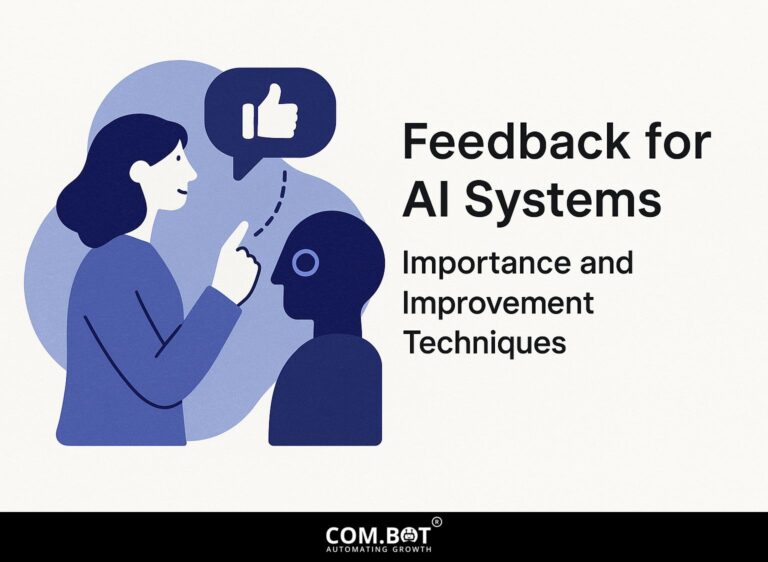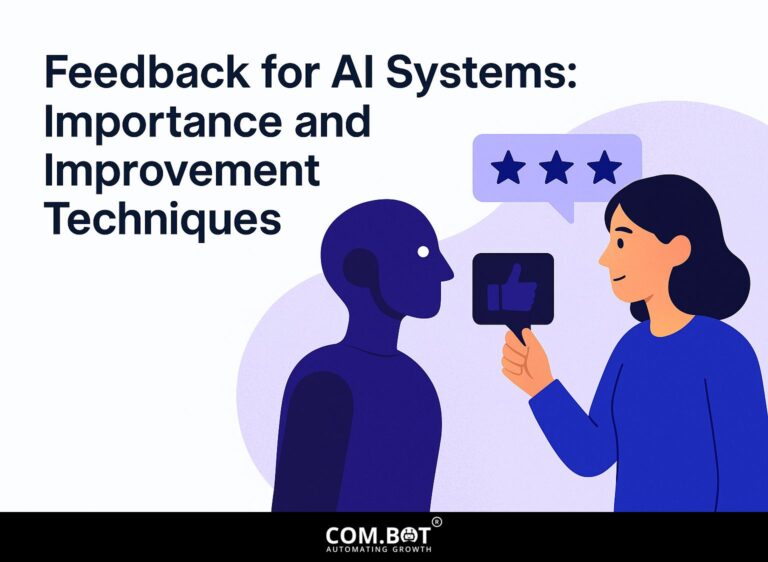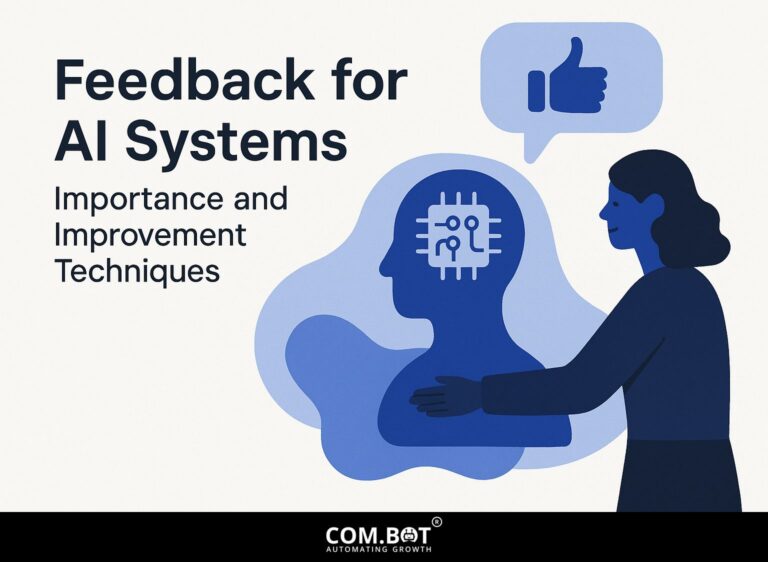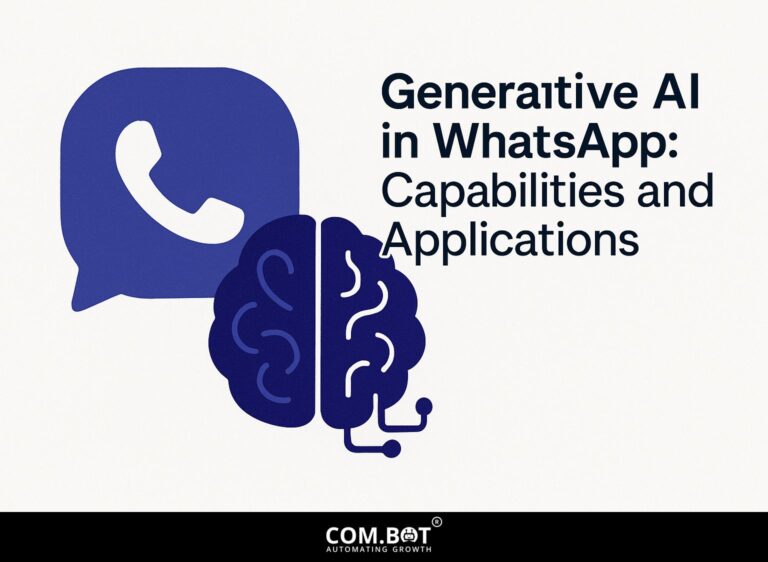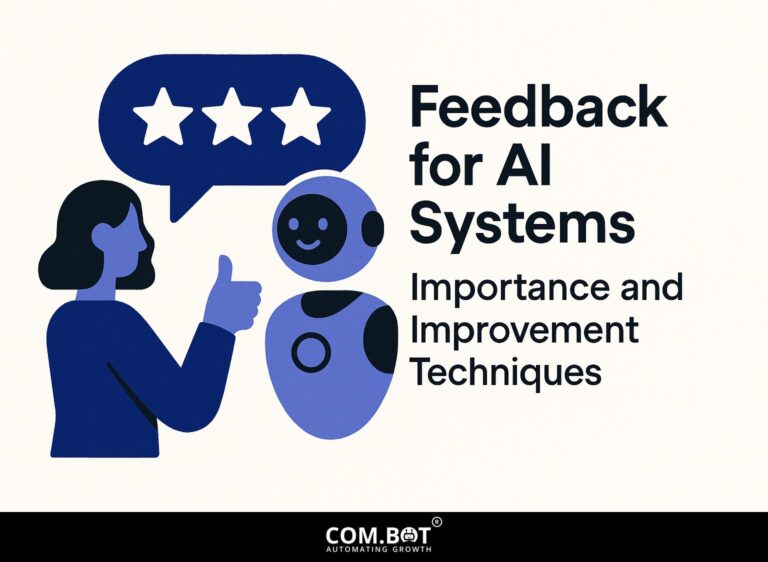Feedback for AI Systems: Importance and Improvement Techniques
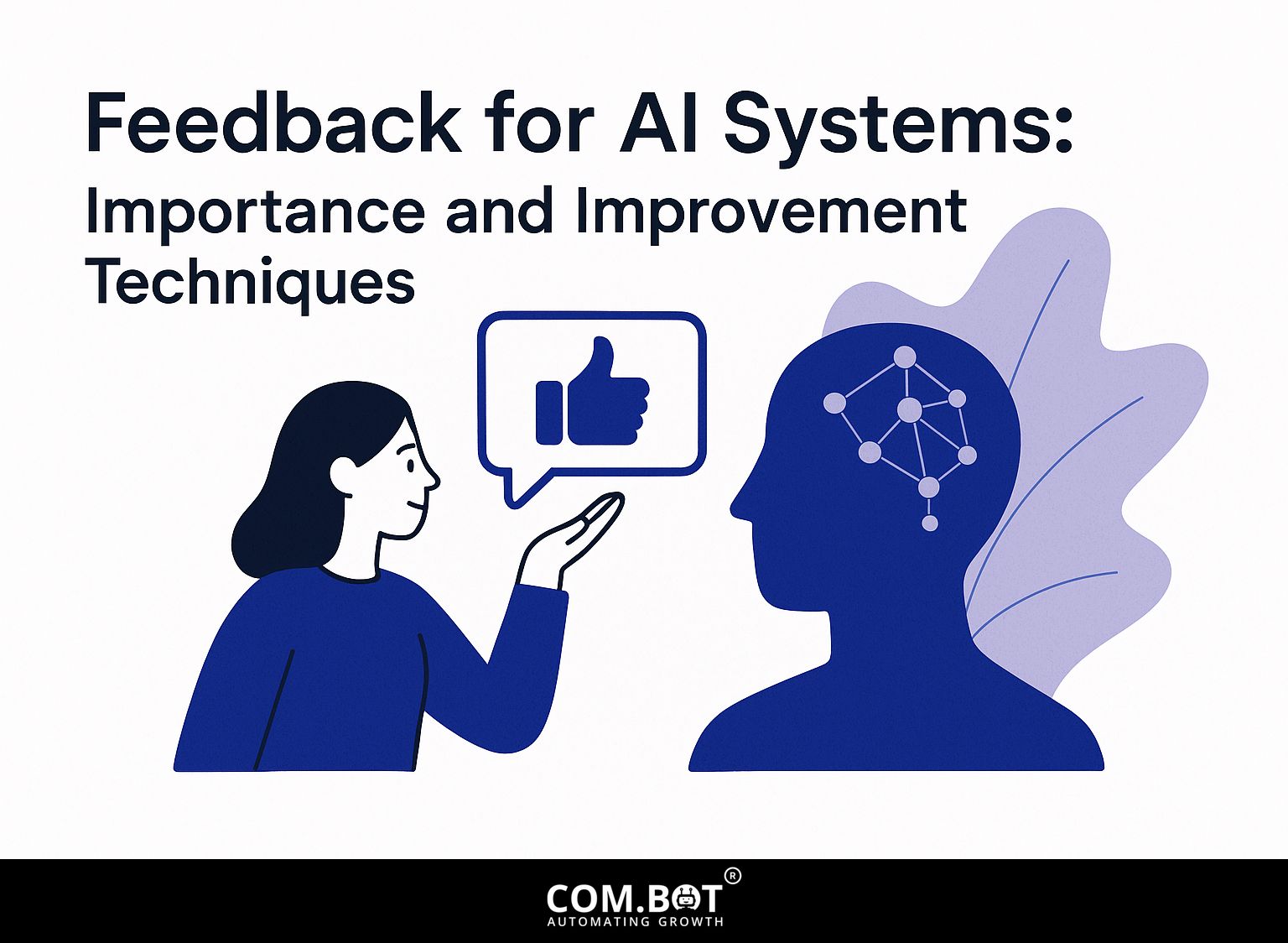
In the fast-growing field of Artificial Intelligence, the AI feedback loop is important for improving systems. Knowing how feedback works, especially the importance of human input and guided feedback, can change how AI learns and improves. This article looks at why feedback is important in AI, examines different ways to make improvements, and shows how good feedback systems can result in better accuracy and user experiences.
Key Takeaways:
- 1 Types of Feedback for AI Systems
- 2 AI Feedback Mechanisms Statistics
- 3 Benefits of Effective Feedback
- 4 Challenges in Collecting Feedback
- 5 Techniques for Improving Feedback Mechanisms
- 6 Case Studies of Successful Feedback Implementation
- 7 Frequently Asked Questions
- 7.1 What is the importance of feedback for AI systems?
- 7.2 How does feedback help improve AI systems?
- 7.3 What are some techniques for providing feedback to AI systems?
- 7.4 Why is it important to have diverse and unbiased feedback for AI systems?
- 7.5 Can feedback be detrimental to AI systems?
- 7.6 What can be done to improve the feedback process for AI systems?
Definition and Overview
AI feedback systems include ways and tools that help assess how well AI algorithms work and improve them over time.
One prominent example is OpenAI’s reinforcement learning from human feedback (RLHF), which integrates human judgments into the training process. This approach allows the model to learn from real-time feedback, effectively refining its responses based on user interactions.
Another key method includes A/B testing, where different algorithm versions are evaluated against each other to determine which performs better.
With these systems, developers can improve the accuracy of AI applications, greatly improving how users experience and use them.
Importance of Feedback in AI
Feedback is important in AI, heavily influencing the model’s ability to adjust and perform correctly with real-world data.
When user feedback is used effectively, AI accuracy improves by 15%. However, it also brings up concerns about ethics.
For instance, if biased data generates skewed feedback, it could reinforce existing prejudices. Tools like Feedback Hub or Labelbox can make it easier to gather user input, allowing AI models to learn from errors and include different viewpoints.
This makes feedback essential for both performance optimization and ethical AI development.
Types of Feedback for AI Systems
AI feedback comes in three main types: human feedback, machine-generated feedback, and reinforcement learning.
Each type has a specific role in training models. For those keen on exploring how these feedback systems contribute to AI enhancement, check this deep dive into feedback for AI systems, which covers importance and improvement techniques.
AI Feedback Mechanisms Statistics
AI Feedback Mechanisms Statistics
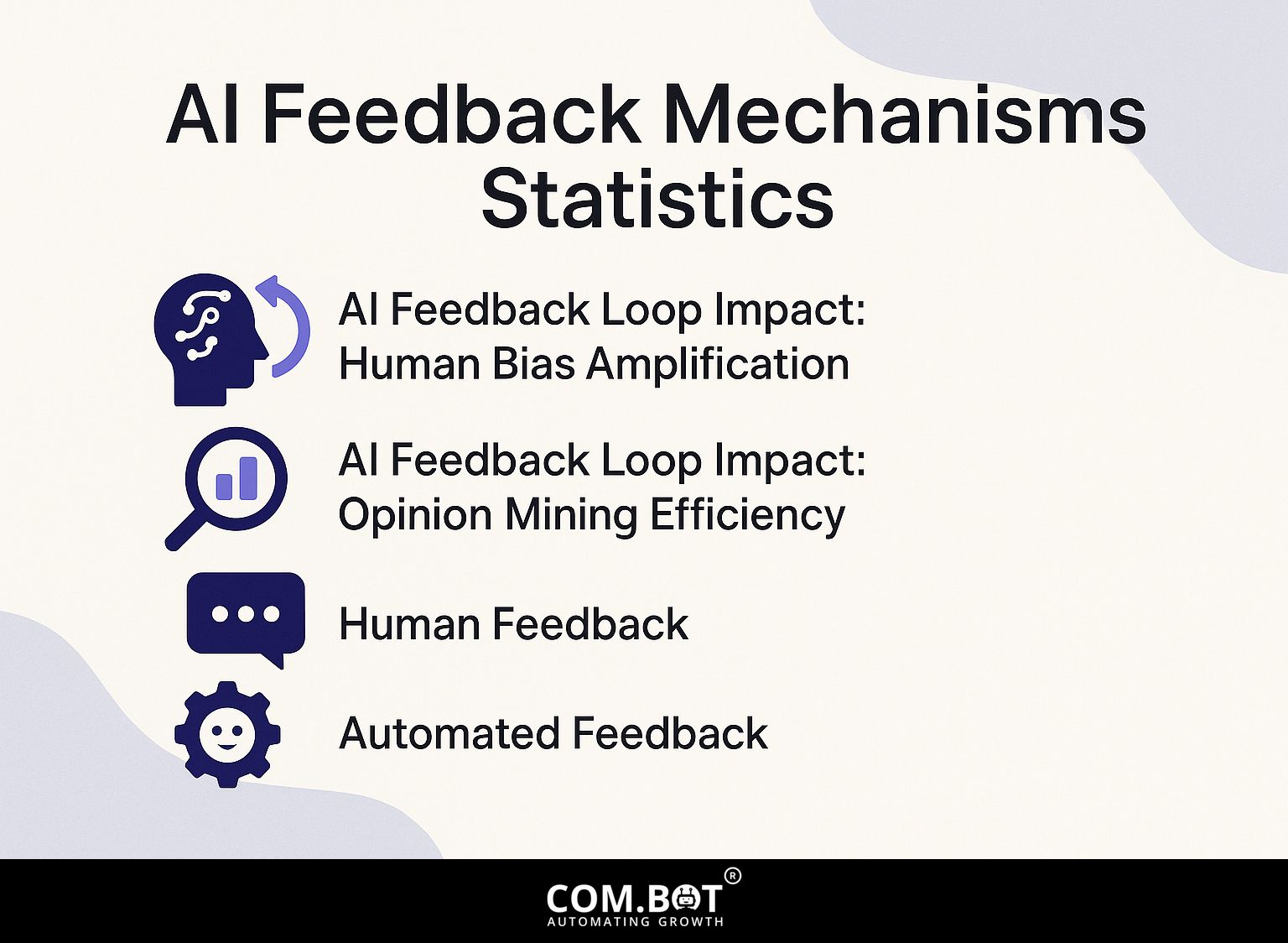
AI Feedback Loop Impact: Human Bias Amplification
AI Feedback Loop Impact: Opinion Mining Efficiency
The AI Feedback Mechanisms Statistics give important information about how AI systems work with human biases and how well they perform in analyzing opinions. These statistics are essential for grasping the wider effects of using AI in decision-making and social interactions.
AI Feedback Loop Impact looks at how AI can increase current human biases. For example, the 32.72% bias in emotion classification shows a big gap in AI’s ability to correctly understand emotional signals, which might cause mistakes in important uses like mental health evaluations or customer support. AI interactions can lead to more human bias by 6.34%, showing that exposure to biased AI outputs can influence human decisions, such as employment or management selections.
- Notably, post-exposure to AI, 38.2% of participants opted for white men as financial managers, highlighting how AI biases can shape perceptions and reinforce stereotypes. This statistic highlights the importance of having a wide range of data and fair practices in AI training to reduce biases.
Opinion Mining Efficiency reveals the impact of algorithmic design on error rates. AI systems using biased algorithms show a significant 24.96 error rate, while noisy algorithms result in a slightly higher 25.33 error rate. These numbers explain why it’s important to make algorithms more accurate. Reducing noise alone without addressing bias does not greatly improve results.
Employing accurate AI systems reduces errors to 1.55 This shows how accurately well-made algorithms can work. This decrease highlights the advantages of careful testing and checking methods to make sure AI systems can accurately gather opinions without making mistakes due to bias or background noise.
In summary, the AI Feedback Mechanisms Statistics highlight the dual challenges of bias amplification and opinion mining accuracy in AI systems. To deal with these problems, we need strong data gathering methods, diverse training datasets, and ongoing checks to make sure AI systems help in decision-making without promoting bad biases.
Human Feedback
Human feedback involves expert input that directly influences AI training, often leading to superior model performance and reduced cognitive biases.
Users can collect feedback on data by using platforms like Label Studio. Here, they label data and share their observations.
In healthcare AI projects, getting feedback from doctors on diagnostic results can greatly improve accuracy-one study found a 20% increase in diagnostic accuracy when user feedback was included.
Frequently checking this feedback helps make model predictions better and lowers errors, which makes AI tools more reliable in fields such as customer support and autonomous vehicles.
Automated Feedback
Automated feedback relies on fixed measurements and consistent data inputs to help AI systems improve themselves, making the process smoother.
For instance, self-driving cars rely on sensors to collect real-time data about their surroundings. This data helps machine learning systems change driving choices automatically.
Techniques like reinforcement learning enable systems to improve by experimenting with various actions and learning from outcomes. Using methods like adding noise or simulating various weather conditions helps make models more reliable.
Algorithms like Convolutional Neural Networks perform much better with these improvements, especially in uncertain surroundings.
Benefits of Effective Feedback
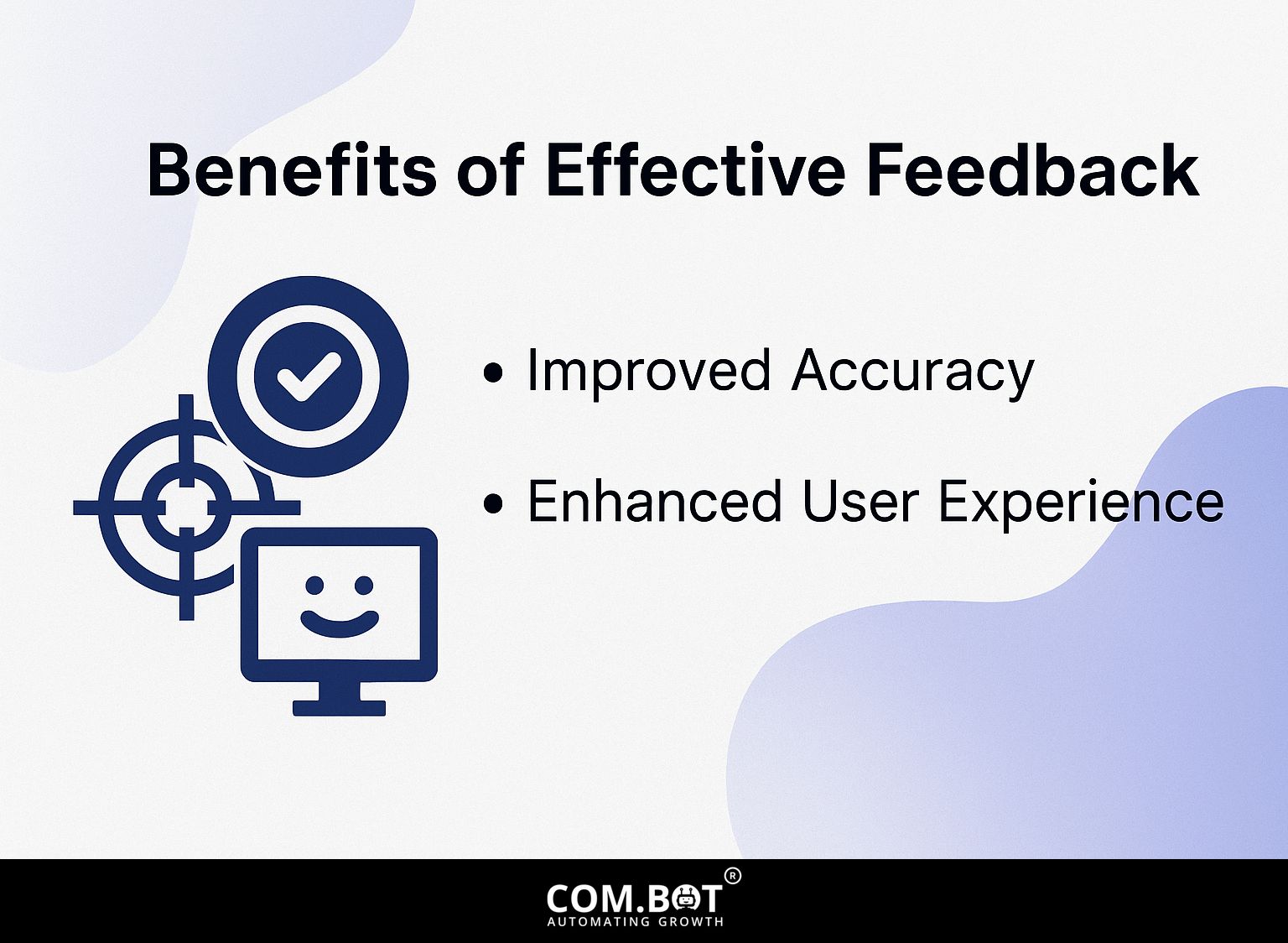
Using good feedback methods in AI makes models more accurate and improves user experience, leading to clear benefits. This approach aligns with the principles outlined in our analysis of Feedback for AI Systems: Importance and Improvement Techniques.
Improved Accuracy
Feedback loops can improve system accuracy by up to 30%, especially when human corrections help train machine learning models through supervised feedback.
For example, Amazon uses a complex suggestion system that gets better as customers use it. When users share their thoughts on recommendations, the system learns and changes upcoming suggestions to provide better results.
In the same way, Google’s search algorithms improve results based on what users click on and how they behave. To set up effective feedback loops in your systems, consider using tools like Google Analytics to track how users interact with your platform.
Use machine learning tools like TensorFlow to apply human corrections, which can gradually improve how your system works over time.
Enhanced User Experience
Effective feedback mechanisms create a seamless user experience, reducing friction and enhancing satisfaction by aligning AI outputs with user expectations.
By implementing advanced feedback systems, e-commerce platforms have significantly improved user interactions.
For example, Company A used machine learning to study customer feedback, which improved their recommendation system. This change led to a 25% increase in customer retention, as shoppers found products that matched their needs more effectively.
Tools like Hotjar and SurveyMonkey provide instant feedback, enabling businesses to quickly change their strategies based on user input. These methods keep the AI useful and matched with what users like, building trust and better satisfaction.
Challenges in Collecting Feedback
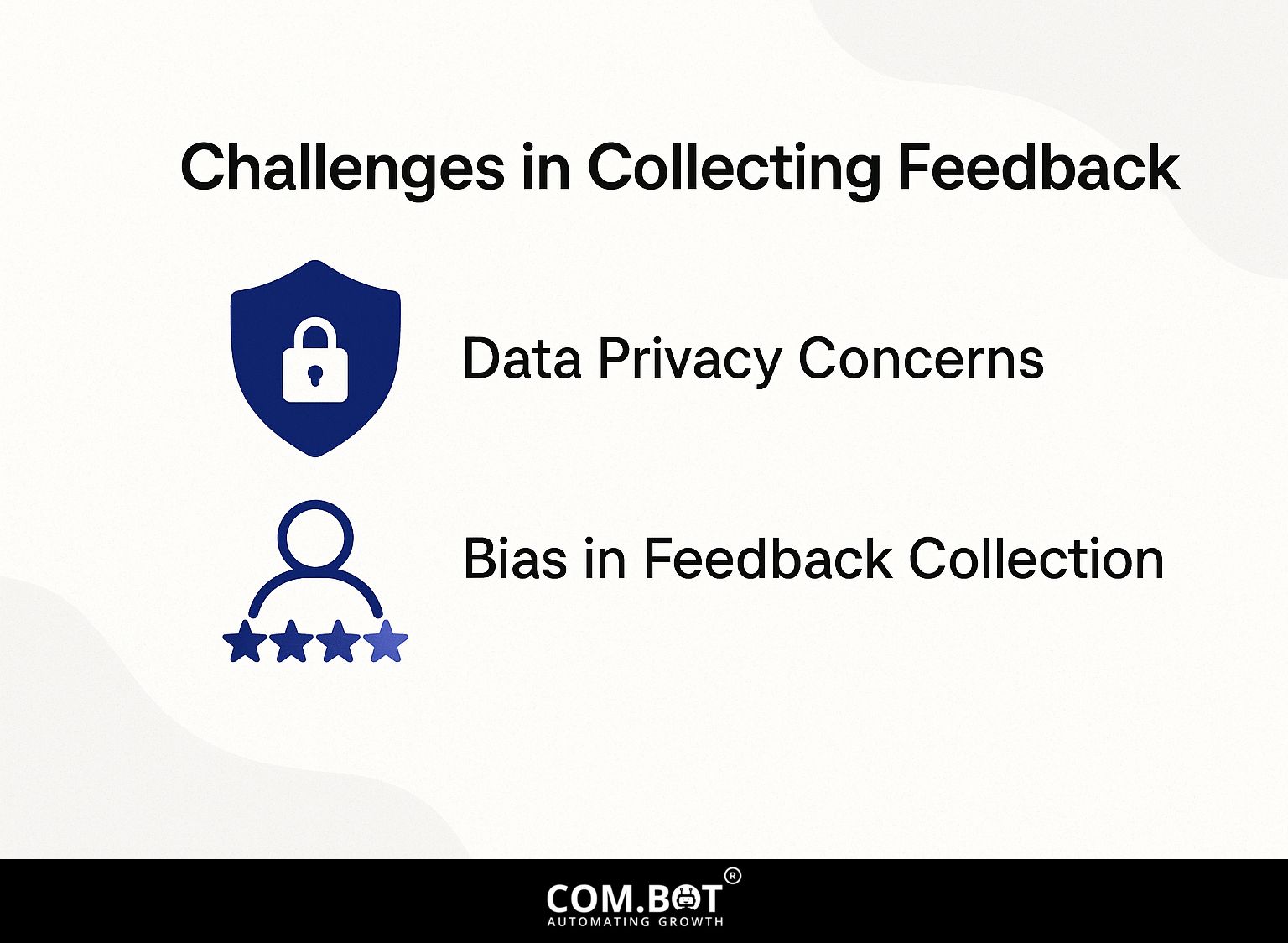
Although feedback systems are important, there are issues in gathering and using feedback, especially related to data privacy and bias. An expert opinion on omnichannel supports suggests integrating diverse channels can alleviate some of these challenges by providing a more holistic view of customer interactions.
Data Privacy Concerns
Data privacy remains a paramount concern, with organizations needing to balance feedback collection with user confidentiality and compliance with regulations like GDPR.
Recent examples highlight the risks; for instance, Facebook faced significant backlash over its handling of user data in feedback systems, leading to increased scrutiny and fines.
To mitigate such issues, companies should adopt best practices:
- Make sure that data collected from feedback is processed so that individual users cannot be recognized.
- Implement clear opt-in processes, allowing users to understand what data is collected and for what purpose.
- Often check and change privacy policies to follow changing rules. This helps build trust and openness with users.
Bias in Feedback Collection
Bias in feedback can lead to errors in AI training, causing models that misrepresent reality and reinforce current ways of thinking that affect decisions.
For instance, Amazon faced criticism when its hiring algorithm favored male candidates, reflecting historical hiring trends in tech. To fight bias, companies should use training datasets that represent different groups and viewpoints.
Regular checks of AI results are important; for example, Google has set up teams to examine and modify algorithms based on effects in real life. Using clear methods such as explainable AI can help people see how AI systems make choices, which builds confidence and equality.
Techniques for Improving Feedback Mechanisms
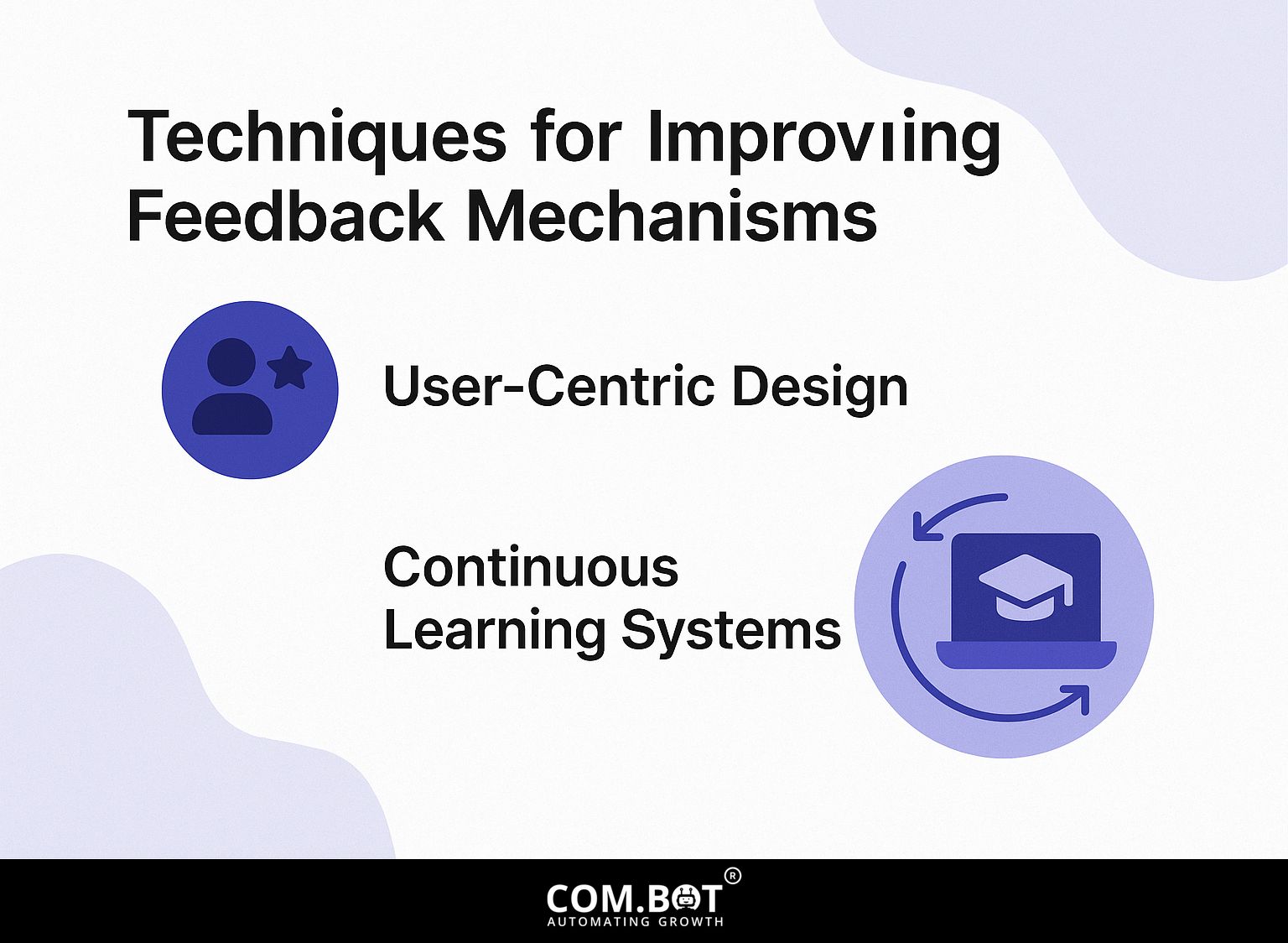
To make feedback systems work better, companies can use different methods that emphasize designing for users and ongoing learning. Related insight: Feedback for AI Systems: Importance and Improvement Techniques
User-Centric Design
User-centered design prioritizes their requirements and experiences, ensuring feedback aligns with practical applications and increases engagement.
To build helpful feedback systems, start by talking with users to gather specific feedback. Schedule sessions with diverse user groups to understand their pain points and preferences.
Next, carry out usability testing by having users try out your product while you watch how they use it. Tools like UserTesting or Lookback can facilitate these processes, enabling real-time feedback and video recordings.
Examine the gathered data carefully to spot patterns that will guide design decisions. This repeated method improves user satisfaction and encourages ongoing progress in creating your product.
Continuous Learning Systems
Continuous learning systems use ongoing data and feedback to update AI models over time, which helps to keep improving their performance.
For example, in healthcare, AI systems use real-time patient data to improve diagnosis accuracy.
By using feedback from specific treatment results, models like IBM Watson can improve their recommendations.
Reinforcement learning is important because it helps algorithms get better by learning from their errors. This method works well in robotic surgery systems, where practicing and fixing mistakes improves accuracy.
Being able to adjust and change improves patient outcomes over time, showing how important ongoing learning is in many areas.
Case Studies of Successful Feedback Implementation
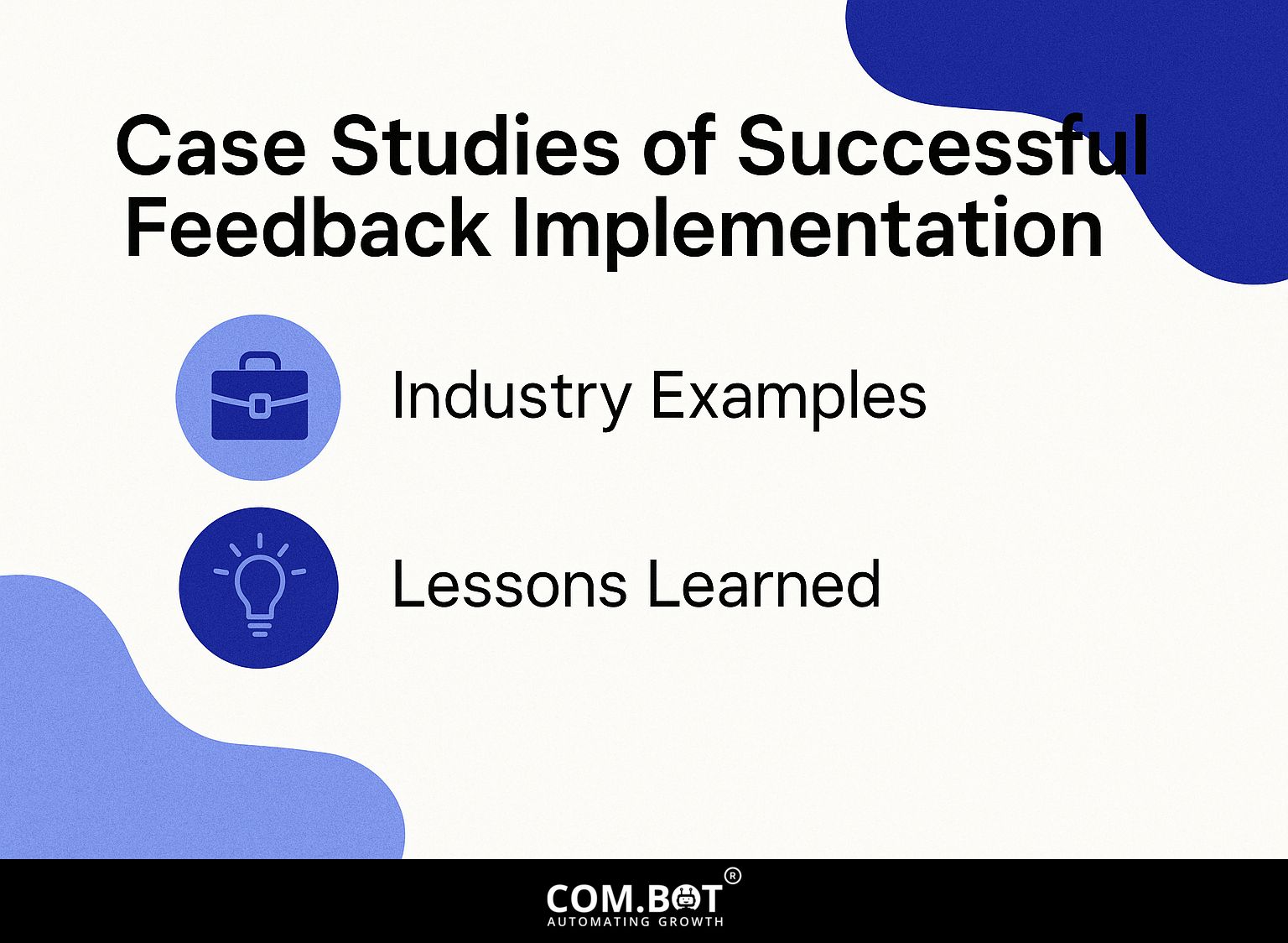
Looking at real-world examples shows useful information about how feedback systems in AI work well in different industries (see our insights on improving feedback for AI systems for further details).
Industry Examples
Many industries, such as healthcare and online shopping, have effectively added feedback systems, leading to significant improvements in AI performance.
In healthcare, systems like IBM Watson have used patient feedback to improve diagnosis algorithms, leading to a 30% increase in diagnostic accuracy.
Similarly, Amazon’s A/B testing approach, where user reviews directly inform AI-driven product recommendations, led to a 40% rise in customer satisfaction.
By using regular feedback, companies can adjust their AI models to meet real-world needs, leading to changes that connect well with users.
These metrics highlight the tangible benefits of feedback systems, driving industry standards upwards.
Lessons Learned
Each successful case study offers critical lessons on the significance of structured feedback processes and the importance of addressing inherent biases.
One key takeaway is the implementation of continuous feedback loops. For instance, organizations using AI in hiring noticed improved candidate selection by soliciting regular input from hiring managers and applicants alike.
Tools like Google Forms can facilitate anonymous feedback collection. Addressing bias also requires regular algorithm audits; companies can employ platforms like Fairness Flow to evaluate and mitigate biased outcomes.
Using these strategies helps create a fair system based on real experiences and feedback from different people.
Frequently Asked Questions
What is the importance of feedback for AI systems?
Feedback is important for AI systems because it helps them learn and get better at their tasks. Without feedback, these systems can’t make correct predictions or choices.
How does feedback help improve AI systems?
Feedback helps AI systems identify and correct errors in their algorithms, leading to improved accuracy and efficiency. It also lets them handle new data and different conditions, making them more flexible and efficient.
What are some techniques for providing feedback to AI systems?
Some techniques for providing feedback to AI systems include manual feedback from human experts, reinforcement learning, and unsupervised learning methods. Each technique has its own advantages and is suitable for different types of AI systems.
Why is it important to have diverse and unbiased feedback for AI systems?
Diverse and unbiased feedback is important for AI systems to prevent bias and discrimination. If the feedback is limited and one-sided, the system can strengthen those biases, resulting in incorrect and unjust predictions or decisions.
Can feedback be detrimental to AI systems?
Yes, feedback can be detrimental to AI systems if it is incorrect, biased, or inconsistent. This can cause the system to make wrong choices or continue existing biases, leading to harmful outcomes.
What can be done to improve the feedback process for AI systems?
To improve the feedback process, AI systems can be designed to learn from their mistakes and adjust their algorithms accordingly. Including feedback from different sources can help make the system more accurate and fair.
